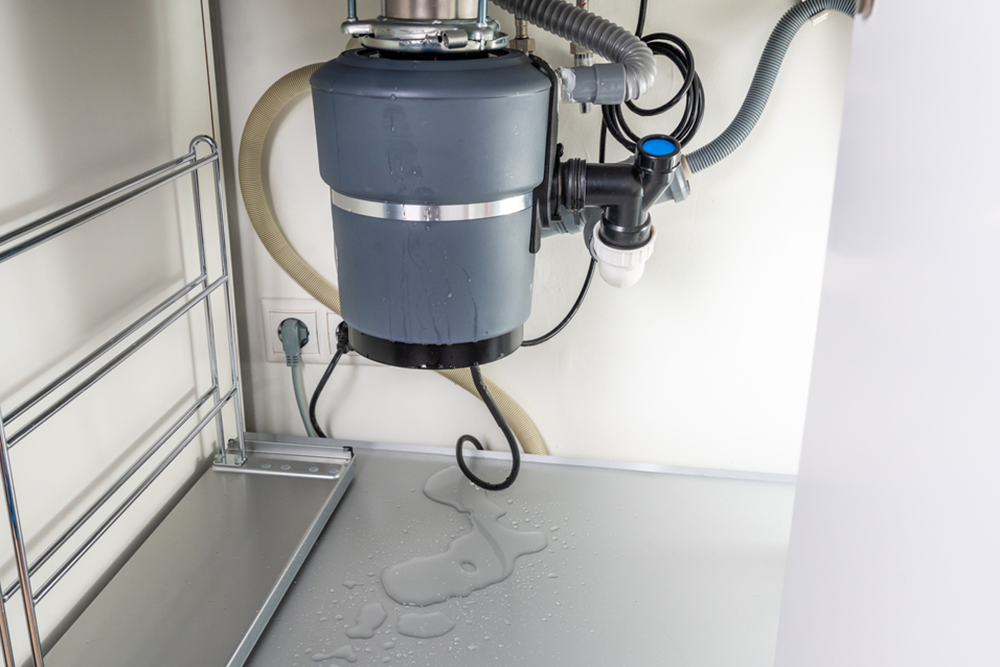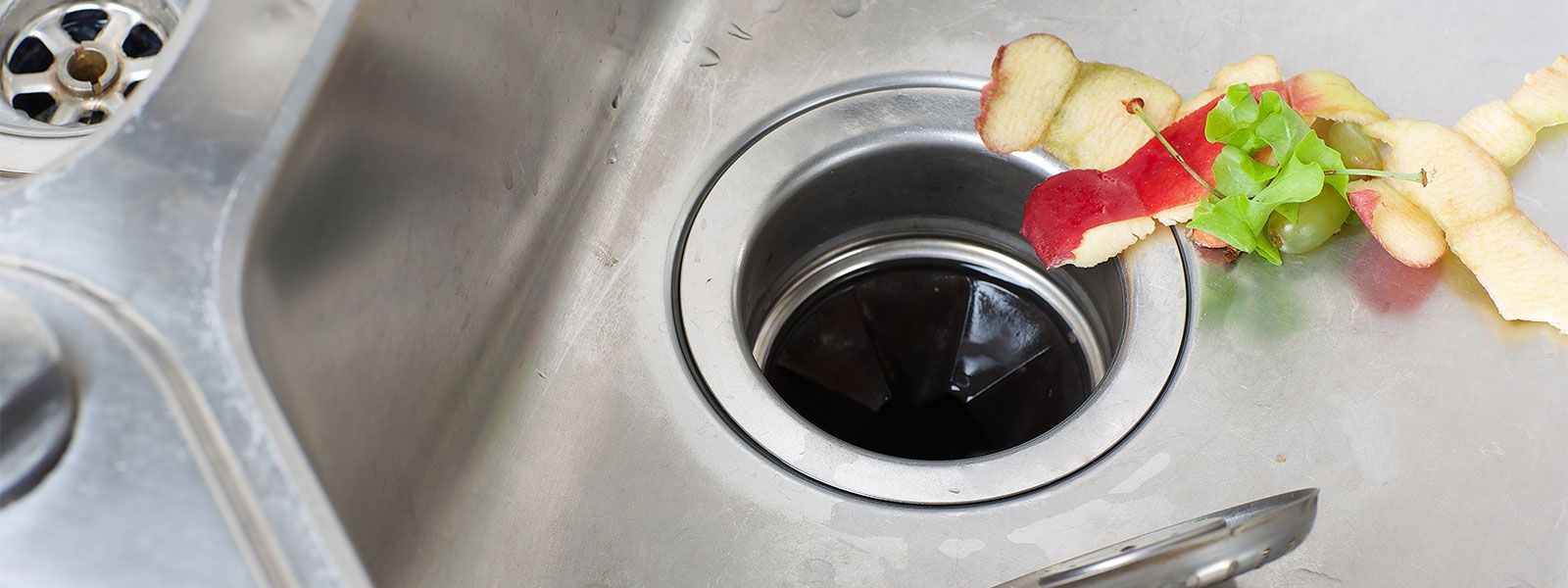Have you been searching for suggestions on Tips on Fixing a Leaking Garbage Disposal?

Waste disposal unit are vital kitchen devices that assist in taking care of food waste successfully. Nevertheless, a dripping garbage disposal can be a frustrating and unpleasant issue to deal with. The good news is, numerous leakages can be repaired conveniently with a few basic actions. In this short article, we will review how to take care of a dripping waste disposal unit efficiently.
Intro
Waste disposal unit are installed under kitchen sinks and are developed to shred food waste into smaller items, permitting it to travel through the pipes system easily. While these devices are generally dependable, leakages can take place with time as a result of damage, loosened links, or damage to the system.
Step-by-Step Overview to Fixing a Dripping Waste Disposal Unit
Shut off the Power
Prior to attempting any kind of fixings, guarantee that the power to the waste disposal unit unit is switched off to stop the danger of electric shock.
Situate the Leak
Determine the specific place of the leak and establish the cause
Tighten up Links
Use a wrench to tighten up any loose links in between the disposal unit and the plumbing system.
Replace Seals or Gaskets
If the leakage is due to worn seals or gaskets, get rid of the old parts and replace them with new ones.
Patching Splits or Holes
For splits or openings in the disposal device, use epoxy or an ideal patching material to seal the damaged area.
Recognizing the Source of the Leak
Prior to attempting to deal with a leaking waste disposal unit, it is essential to recognize the source of the leak. This can typically be done with aesthetic inspection or by carrying out straightforward tests.
Visual Evaluation
Examine the garbage disposal system meticulously for any indicators of water leak. Pay attention to locations around seals, gaskets, and connection points.
Examining for Leakages
One method to examine for leakages is by running water with the disposal device and looking for any type of noticeable indications of leak.
Common Sources Of Leaks in Trash Disposals
Worn Seals and Gaskets
Seals and gaskets play an important duty in stopping water from dripping out of the garbage disposal. Gradually, these parts can deteriorate, causing leaks around the disposal device.
Loose Connections
The connections between the garbage disposal and the plumbing system can end up being loosened gradually, creating water to leak out during operation.
Cracks or Holes in the Disposal Unit
Physical damage to the garbage disposal, such as cracks or openings in the real estate, can additionally result in leakages.
Devices and Products Needed for Repairing a Leaking Garbage Disposal
Prior to starting the repair work process, collect the essential devices and materials, consisting of a screwdriver, flexible wrench, plumbing technician's putty, replacement seals or gaskets, and epoxy or patching product for repairing splits or holes.
Evaluating the Garbage Disposal After Repair Service
Once the repair service is complete, examine the garbage disposal by running water with it to ensure that the leak has actually been dealt with.
Preventive Upkeep Tips to Stay Clear Of Future Leaks
To avoid future leaks, it is necessary to do regular maintenance on your waste disposal unit. This includes keeping it tidy, staying clear of putting non-food products or difficult items down the disposal, and occasionally looking for leakages or various other concerns.
Conclusion
In conclusion, dealing with a dripping waste disposal unit is a reasonably simple process that can be completed with basic tools and products. By adhering to the steps laid out in this post and practicing preventive upkeep, you can keep your garbage disposal in good working problem and prevent costly fixings in the future.
What to Do About a Leaking Garbage Disposal
A leaking garbage disposal often goes unnoticed until you confront a sopping cabinet, a foul-smelling puddle, or an audible drip-drip-drip from the unit. The fix can be frustrating, too, because the leak can stem from a number of components in the system. Fortunately, with a little sleuthing, you can zero in on the leak and—depending on the exact location—stop the icky oozing and repair the component that caused it. Worst case scenario, if it turns out that the garbage disposal must be replaced, installing a new one is a reasonable do-it-yourself task for those with basic plumbing skills. Read on to keep the cash you’d otherwise hand over to a pro.
Prepare to find the leak
Prior to testing the garbage disposal for leaks, unplug it at the wall outlet and turn off the power from the breaker box to prevent electrical shock. Then insert a watertight sink stopper into your sink drain and wipe the unit dry with a clean cloth. In any handy container, mix a few drops of food coloring into a few cups of water, and pour the dyed water onto the sink stopper to help you locate the leak.
Investigate the source
the top, where the disposal meets the sink drain the side, where the dishwasher hose or main drain pipe connects to the disposal or the bottom of the unit Inspect each of these locations while gliding a light-colored rag over the unit; the dyed water will readily show on the rag and reveal the location of the leak. If a leak isn’t immediately apparent, remove the sink stopper and pour a few more cups of dyed water down the sink drain, then check for leaks again. Leaks near the top of the unit are more likely to show themselves while the sink is plugged, while side and bottom leaks are more noticeable while the sink is unplugged.
The metal sink flange that sits directly inside the sink drain is typically sealed around the top with plumber’s putty (a clay-like sealant) and then secured from under the sink with bolts. If the plumber’s putty deteriorates, or the bolts loosen, the flange can no longer form a watertight seal between the sink drain and the disposal—which could cause a leak at the top of the unit.
To reseal the leaky flange, you must first detach the garbage disposal. Start by loosening the screws securing the main drain pipe to the disposal, then loosen the screws in the metal clamp securing the dishwasher hose to the disposal and detach the drain pipe and dishwasher hose from the disposal. Loosen the screws in the mounting ring that connects the disposal to the metal mounting assembly beneath the sink, then pull down the disposal and carefully set it on a clean, dry surface. Loosen the bolts in the mounting assembly with a wrench, then pull down the mounting assembly and set it near the disposal.

I stumbled upon that piece on The Handy Guide To Fixing Your Garbage Disposal Leaking while looking around the search engines. Appreciated our article? Please share it. Help others discover it. Thank you for your time. Kindly check up our website back soon.
Hire A Pro